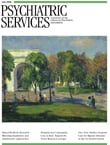The book Physical Abusers and Sexual Offenders: Forensic and Clinical Strategies is intended to be an educational text for professionals to use while assessing, investigating, and treating physical abusers and sexual offenders. In addition, the author aims to clarify how the areas of physical abuse and sexual offense are quite similar and should be brought together into one field for purposes of assessment and treatment. Scott Allen Johnson is a forensic psychologist who is nationally and internationally recognized for his research and work in the areas of domestic and relationship violence and sexual offenses. He has conducted over 850 forensic assessments for the state of Minnesota. He has also published several books, chapters, and professional materials in the field.
The book is divided into five sections, with 57 chapters. Topics covered include the offending cycle, characteristics of physical and sexual offenders, interviewing strategies, treatment issues, and investigation strategies for law enforcement, probation, and parole officers.
In the first section, the offending cycle is explored, beginning with psychological forces, coercion, and abuse. A description of the various forms of control is repetitive at times but informative. A 14-stage cycle is discussed at length, with "behaviors, emotions, and self-talk" for each stage discussed. In one chapter, there are exercises for the perpetrator to complete concerning these parts of the cycle. This portion is somewhat confusing to the reader because only at the end of the chapter is it revealed that it is intended for the perpetrator, whereas the rest of the book is intended for professionals.
The next section, characteristics of physical and sexual offenders, describes the similarities between these types of perpetrators and the various typologies of offenders. This section also covers topics such as female batterers, domestic abuse, child abuse, and the role of drugs and alcohol in abuse. Section 3 covers interviewing strategies and approaches. Also covered in this section are topics such as detecting deception, diagnosis, and use of collateral information in completing an evaluation. Treatment issues are discussed in section 4. There is brief mention of pharmacotherapy, with most of the focus on the effectiveness of group and cognitive-behavioral therapy. Also, areas such as interacting with the parents of the offender, interviewing the victim, and dealing with offender complaints are addressed.
Finally, there is a brief section for law-enforcement professionals that gives recommendations regarding search of the offender's property and sex offender profiles.
Although the book is quite comprehensive and detailed in many respects, it is also repetitive at times and could be more concisely written. Also, disappointingly, there are numerous grammatical and typographical errors, which were distracting at times and detracted from the content of the book. Overall, the author succeeds in portraying the similarities between physical abusers and sexual offenders. However, it would have been helpful to recommend suggestions for bringing the fields closer together.

